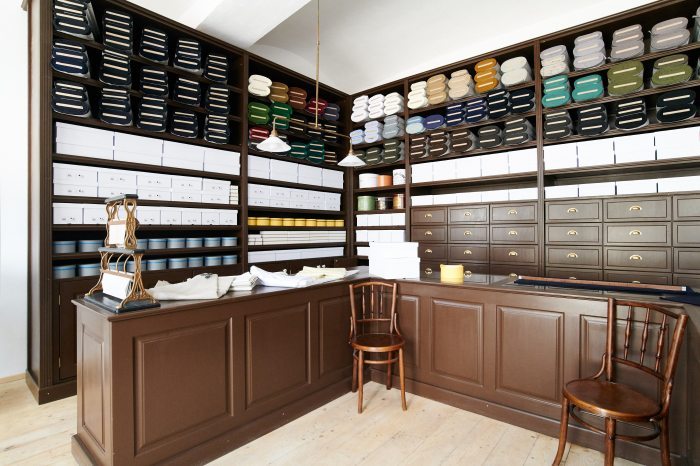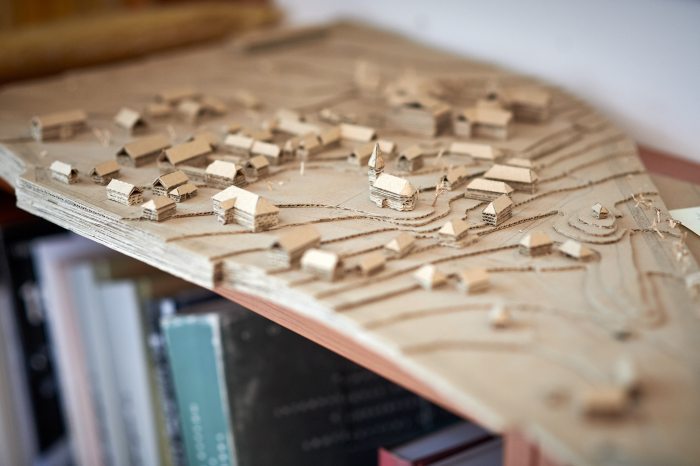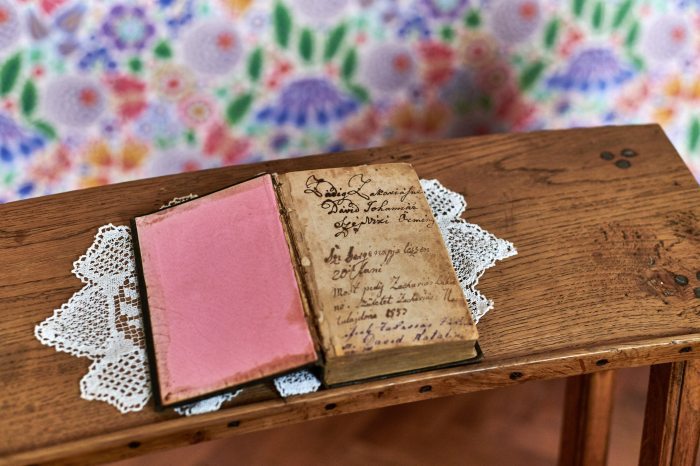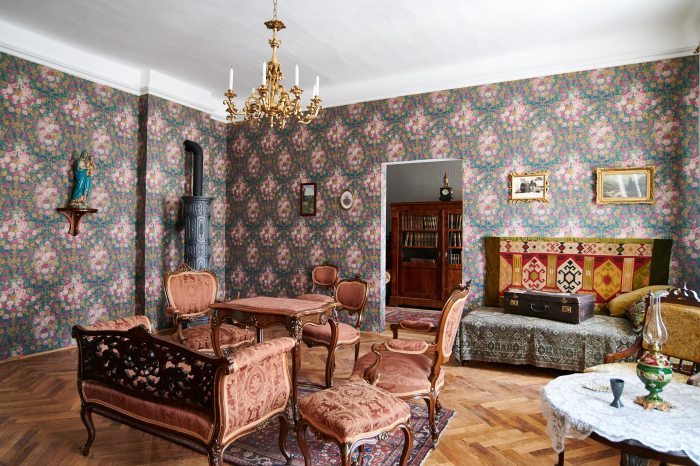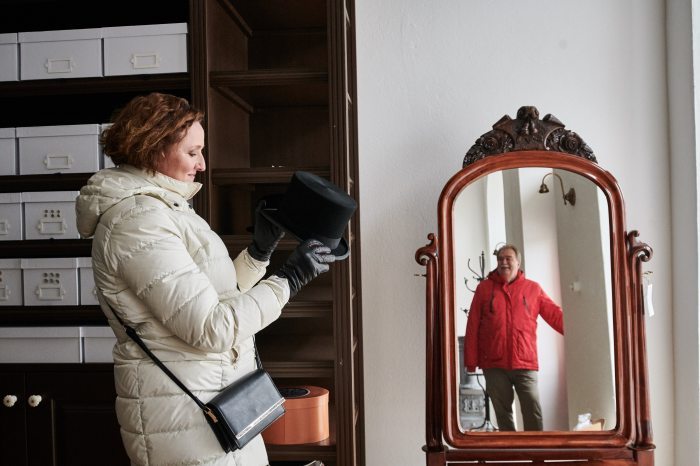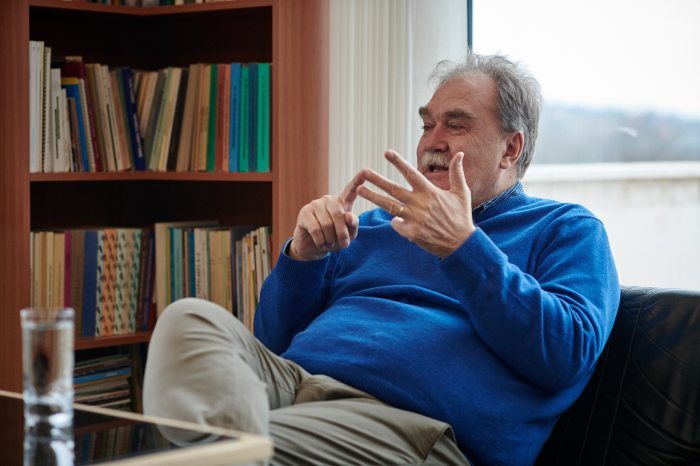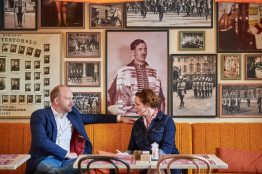Transylvania comes to life in Szentendre – we visited the new exhibition of the Hungarian Open Air Museum
You need to have a playful heart to dream up, build and manage a human-scale landscape tableau, a toy city built from real elements. This playfulness is my strongest impression of Miklós Cseri, Director General of the Szentendre Open Air Museum. As we roll in a small golf cart through the Transylvanian section about to open, I think how nice it is to meet a dedicated professional who has spent decades in the same job, but has lost none of his enthusiasm, and is still full of plans.
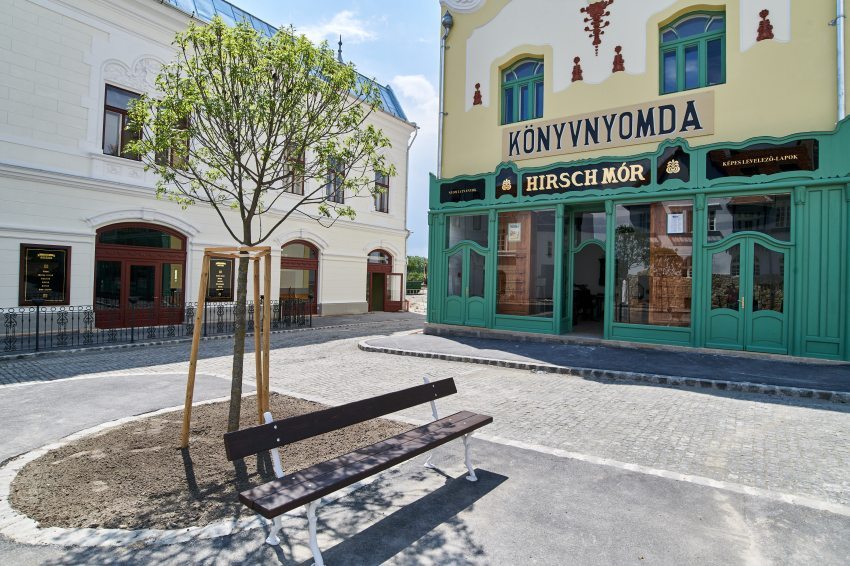
Miklós Cseri shows the newly built Transylvanian landscape unit with sincere joy and understandable pride: when fully completed, it will represent a real change of scale in the history of the Open Air Museum, as it will consist of 140 buildings on 15 hectares, in which a total of 25,000 artifacts will await visitors. The centerpiece of the section, which will be open to visitors from May, will be the main square of a Transylvanian town: a café, an Art Nouveau newspaper editorial and printing house, a grocery store, a pharmacy, a functioning post office, with the postman’s apartment above it, and a monument to the 1848 Revolution in the center of the square. It is not by chance that we feel at home among these buildings, they may be familiar from several Transylvanian towns, i.e. Marosvásárhely/Târgu Mures, Székelyudvarhely / Odorheiu Secuiesc, Kézdivásárhely / Targu Secuiesc, Sepsiszentgyörgy / Sfântu Gheorghe, and Székelykeresztúr / Cristuru Secuiesc. Unlike the traditional village houses of the traditional open-air museums, they were not dismantled, brought here, and reassembled, but replica-like copies of them were built here.
It's not the only thing that makes me feel like, in a few hours, I have to completely reprogram in my head everything I have ever thought about the Open Air Museum. The Open Air Museum is no longer a lifelike but static monument to a traditional village way of life that is disappearing, lost in the moment. Not only does the town appear in the landscape, but it also becomes alive:
you can shop at the pharmacy, post a letter at the post office, and eat a good cake at the café.
The new generation of open-air museums, like the one in Szentendre, which is amongst the world's leading ones, provide information by asking questions from the visitors and not by making statements. It makes you think and guides you gently through the process, with special attention to children, who make up a significant proportion of the Open Air Museum’s visitors. The youngest children no longer have a real personal attachment to the objects exhibited in the Open Air Museum: they no longer saw tools and furniture like these at their grandparents', they have never slept under their grandmother's duvet during the school holidays, and they have only seen a masonry oven in the show bakeries. They can be reached by storytelling and experiential elements. The future main entrance to the Transylvanian region, which evokes the Romanian-Hungarian border from before the fall of communism, is intended as such. The evocation of the "border freak", the stories of literature or food smuggled in a meticulously searched car, make it clear to the visitor from the very first moment that we are talking about two parts of the country, artificially and violently separated from each other. Because in fact, it is far from self-evident that
in Szentendre, a Transylvanian landscape has been created which is now on the other side of the border.
"There is a serious professional, historical and ethnographic reason why we deal with the Transylvanian region, and of course, there is an emotional and national political too," says the Director-General. "The professional reason is that Transylvania is an independent entity in ethnographic, cultural, and historical terms, and has a special place in Hungarian history. Until 1998, we were operating on the basis of our old founding document, established in communist times: it was not possible, almost forbidden, to deal with areas beyond the border. When at last this possibility was included in the installation concept, we had to decide whether to display a region that is now on the other side of the border or to follow professional considerations when expanding the Open Air Museum. The professional canon, quite rightly, says that cultural phenomena are not bound by administrative borders. Consequently, if we find in Burgenland the same things that we have already been built in the Őrség-Göcsej region, we will not bring buildings and equipment from Burgenland. Csallóköz has the same characteristics as Kisalföld, Felvidék has the same characteristics as Palócföld, and Kárpátalja has the same characteristics as the Upper Tisza region. But
Transylvania is unlike any other because it is a separate entity, larger and more diverse than any other. To give just one example, the so-called Eastern or Samos house type is not found anywhere else in the Carpathian Basin.
Of course, the professional and lay public kept asking why we didn't also cover the other areas beyond the border, so we finally decided to transfer a typical building from the neighboring area to the existing landscape units. So that is the professional reason for the Transylvanian section.
But there is also an emotional, if you like, subjective reason, and it stems from the terribly stupid and devastating joke that goes, "When will the Sekler become a Romanian? When he gets off the train at the Eastern Railway Station in Budapest." There are a lot of questions and a lot of puzzlement in people's minds about this, for which a decent answer must be given. Cultural national unification is about the fact that this region, administratively and politically separated from Hungary, is part of the history of Hungarian development. It has always been and always will be, and this is something that must be taken into account. And last but not least, there is a more practical reason for the development of the Transylvanian section: to preserve the value, since Ceaușescu would never have imagined in his wildest dreams that the destruction of villages and old buildings would be on the scale of that which has occurred as a result of people working in Germany, Italy or England. The inhabitants of the Transylvanian villages go abroad to work, the money comes home, and the Hungarians immediately use it to renovate the traditional houses they inherited from their grandparents. This is understandable, but it causes great damage. In a few months, the whole image of the streets is changed. We are in the last moment to save something from this."
From Miklós Cseri, I learn how the intention and then the concept slowly evolved through conferences and negotiations; how the dream became a plan, the plan became a government decision; how the most important objects and buildings were purchased with various funds, and how what could be saved was salvaged, and how the regional unit that has now been handed over was finally built. It was not only the political leadership that had to be convinced, but also professional public opinion, and the Romanian authorities had to be cooperated with. The Director-General explains how the concept of the Transylvanian unit finally included not only objects of Hungarian ethnographic importance but also Romanian, Saxon, Gypsy, Jewish, Armenian, isolated Hungarian, and Sekler, in other words, practically all the nationalities that make Transylvania so magical. And we also talk about the perhaps most important difference in approach, i.e. the importance of the presentation of urban life in comparison to the traditional concept of the Open Air Museum, which presents rural life.
By spring 2022, the Transylvanian town was built - you can see the deceptive complex of buildings from the motorway, and if you don't know that you are driving between two sides of an Open Air Museum, you wouldn't understand how they appeared on the hills of Szentendre. But the village is also ready with 5-6 houses, a church, and community buildings, for the time being only for show. Lay people like me are probably just as curious to know what the experts use as a basis for selecting buildings from all over Transylvania to represent the region. Miklós Cseri refers to the movie Amélie, the scene where the protagonist rolls grain between her fingers. Such a filter is being developed by ethnographers, from smaller units within a large region, from the westernmost region of Szilágyság to the easternmost region of Moldva, from typical Transylvanian cultural phenomena such as the bear, salt, the dish of ‘puliszka’, or dance, and music, or even the Unitarian religion itself. They filter through a complex matrix the objects and buildings suitable for collection and try to end up with an inventory where an object or building can be classified into several distinct categories and types. These draw a mosaic-like picture of completeness, as far as it can be drawn from the centuries of a community with such a rich and diverse heritage.
"When will the whole Transylvanian landscape be ready?" - I ask impatiently. To my surprise, Miklós Cseri answers with a very precise date: the second phase should open on 5 July 2025. "That is a very specific date, that's when I will retire. And it would be a good way to end my thirty-something-year career," smiles the Director-General.
But in the meantime, he has plans up his sleeve: one of them is to present the buildings of Hungarians living in the diaspora. He says that there is already an iconic building of Hungarians in Pennsylvania and Argentina that was destined for demolition, and they are also bringing home a small building from a Hungarian kibbutz in Israel. In fact, they will help those who stayed in Hungary to reflect on why and what paths emigrants around the world chose to remain true to their Hungarian origins. Another important project is to present the century that followed 1920. "The ethnographic canon keeps track of the traditional peasant way of life only until 1920 but has no intention to explore the way of life of the one hundred year that followed. Yet history has accelerated sufficiently to present plenty of examples from the later decades of the twentieth century, from the buildings designed by Kós Károly and others to the houses rebuilt after the Bereg floods and the red sludge disaster, based on vernacular forms. It is very exciting to understand through the built heritage the processes that led to the disappearance of the peasantry, the transformation of lifestyles, the emergence of communities commuting or settling in the city, or the construction of weekend cottages in the countryside, because the desire to have a garden was still alive in the hearts of people who moved into the city," says Miklós Cseri, going into details about his plans for the future. It will be worth returning to the Open Air Ethnographic Museum in Szentendre for a long time to come.
Képmás magazine has launched a new series called Public Treasure, in which Kata Molnár-Bánffy, the publisher of Képmás, talked to dedicated people whose successful work can be of interest to many, and is a Public Treasure, as the title of the series suggests: a common issue, something we want to take care of.
